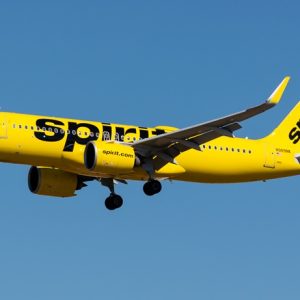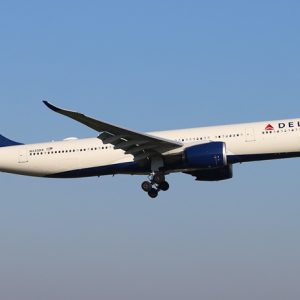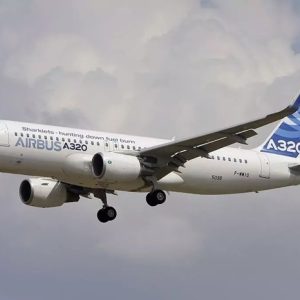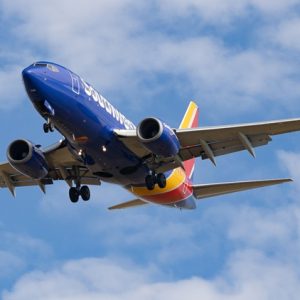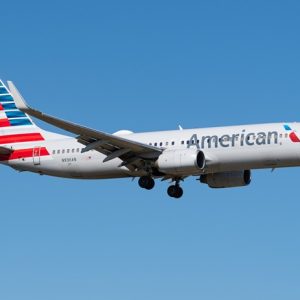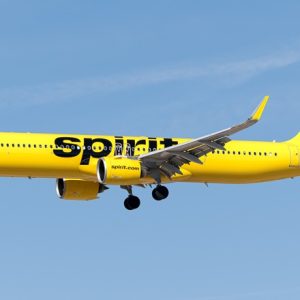
A United AirlinesBoeing 737-700, flight UA-1269, was climbing out of Albuquerque International Sunport Airport (ABQ), New Mexico when it temporarily lost cabin pressure.
The crew called air traffic control (ATC) after the malfunction occurred passing through 28,000 feet (FL280).
The jet, registration N13720, was bound for Chicago O’Hare International Airport (ORD), Illinois. The pilots decided to stop their climb and head back to Albuquerque, informing ATC that that the oxygen masks for the passengers were nearly deployed. The plane returned to the terminal after about an hour, according to FlightAware data.
Failure To Launch: A 737 Stuck In Albuquerque
The plane that suffered a pressurization failure was inspected after the incident and after 21 hours, it was able to return to service. The unlucky passengers arrived in Chicago six hours late after transferring to a replacement Boeing 737-900, registered N69804, according to the Aviation Herald.
Earlier this month, this author also covered a similar incident that occurred aboard an Alaska Airlines Boeing 737-900ER on June 3, 2025.
Alaska flight 825 flying out of Seattle-Tacoma International Airport (SEA) would return only one and a half hours later due to cabin pressurization loss. The plane was bound for Hawaii, as FlightAware details.
Boeing is also dealing with a lawsuit that was filed by passengers aboard a 737 MAX 9 when the door plug blew out. This statement from the plaintiff’s counsel was reported by LAW 360:
“The event physically injured some passengers and emotionally traumatized most if not all aboard. Passengers were shocked, terrorized and confused, thrust into a waking nightmare, hoping they would live long enough to walk the earth again.”
All The Wrong Reasons: Boeing In The Spotlight Again
The headlines of aviation mishaps and safety incidents in recent history paint a picture of Boeing besieged on all sides. The 737 MAX line suffered tragic accidents that had fatal consequences on two terrible occasions. As recently as last week, a 787 Dreamliner crashed in India, killing all but one aboard.
Simple Flying’s Jake Hardiman delivered the first coverage of the tragic accident for SF. The crash is still under investigation and no details concerning the cause have been released.
Multiple aviation safety agencies are involved. The latest updates, like this report from the BBC, confirm that both “black boxes,” the flight data and voice data recorders have been recovered.
The Federal Aviation Administration (FAA) is not yet planning on grounding the US fleet of 787 jets, as reported by John Pullen for SF. Only time will tell what happens in the wake of this latest incident, until official determinations are released, the rest is speculation.
Cabin Pressurization: Always Breathing Easy
A pressurization system is required on any aircraft that flies above 10,000 feet (3,048 meters) to avoid the negative side-affects of low oxygen concentration at high altitude.
In the event that a cabin pressure system is unable to maintain the correct air flow, a redundancy exists to ensure safety: oxygen masks.
Modern commercial jets have overhead mask systems that drop down at every seat automatically based on sensor data.
The pilots actually have a different type of face mask in the cockpit than what the passengers in the cabin areas have, as Nicole Kylie covered for SF in a previous report.
The masks in the overhead compartments provide a lower flow rate that is designed to be enough for a short period until the aircraft drops low enough for normal breathing.
The flight deck’s oxygen masks are made to sustain prolonged operations with a higher flow rate of oxygen.
Cases of cabin depressurization are one of the more common kinds of incidents in aviation, and thanks to an abundance of training, technology, and safety procedures, they typically end in nothing more than a delay.
Thankfully, that was the case in Albuquerque, and the jet did regain pressure before landing. It goes to show why, in general, flying is still the safest means of transportation there is.
